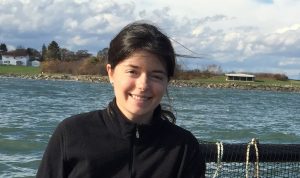Search results for: Дизайн человека Генные ключи Дизайн человека Расшифровка дизайн человека расшифровка карты human design ❤ metahd.ru <<<
Technology Enables Better HAB Monitoring and Mapping
Technology Enables Better HAB Monitoring and Mapping The project’s sampling plan for the Nauset area of Cape Cod. Sept. 2018 — Nauset Marsh in Eastham, Mass. on Cape Cod serves as a “natural laboratory” for researchers working to better understand harmful algal blooms (HABs) or red tide. HABs in Nauset are caused by the phytoplankton…
Read MoreSalt Marshes: Jewels of the Northeast
Salt Marshes: Jewels of the Northeast Helpful to educators and students. Giese, G.S. and T.I. Crago Nor’easter, Vol. 6, No. 2, pp. 12-15, 1994 WHOI-R-94-008
Read MoreMarine Mammal Threats
Marine Mammal Threats Background Many marine mammal populations are decreasing to critical levels largely due to human actions including; accidental capture in fishing gear (entanglement and bycatch), habitat destruction, pollution, commercial hunting, increase in ocean noise, increase in vessel traffic, and ship strikes. In addition, climate change is having an impact as prey moves, habitat…
Read MoreVideo
The following videos are available in DVD by emailing seagrant@whoi.edu and via YouTube as we upload them. Oceans Alive 2008 “Whale Detection System Help Prevent Ship Strikes” featuring John Kemp, Mooring Operation & Engineering group, WHOI Oceans Alive 2007 DVD, 2007 WHOI-V-07-002 This DVD includes the presentations from the 2007 “Oceans Alive” lecture series. Presentations…
Read MoreTeacher Workshop November 2003
Teacher Workshop November 2003 “Right Whale Ecology at the Intersection of Science, Technology, and Conservation” Dr. Mark Baumgartner is an Assistant Scientist in the Biology department of Woods Hole Oceanographic Institution. He studies the foraging behavior and ecology of whales, and the formation and location of the patches of plankton that whales feed on. In this…
Read More1996-1998 Projects
Tidal Flat Deposition: Processes and Rheology David G. Aubrey, Woods Hole Oceanographic Institution Pollutants often accumulate in fine sediments present along coastal and estuarine zones and along the open coast. Because the fate and transport of some pollutants follow that of fine sediments, it is important to understand the processes behind sediment movement. Unfortunately, fine…
Read MoreSustaining Coastal Landforms
Sustaining Coastal Landforms Helpful to educators and students. WHOI Sea Grant Focal Points, 3 pp., 2001 WHOI-G-01-002
Read MoreBivalve Mollusc Hatcheries: A Critical Appraisal of their Development and a Review of their Potential Value in Enhancing the Fisheries of Developing Nations
Bivalve Mollusc Hatcheries: A Critical Appraisal of their Development and a Review of their Potential Value in Enhancing the Fisheries of Developing Nations Mann, R. Memorias de la Asociation Latinoamerica de Acuicultura, A.L.A., Vol. 5, pp. 97-105, 1983 WHOI-R-83-023 This paper reviews the historical development of marine bivalve mollusc culture and emphasizes hatchery development. A…
Read MoreBioacoustics
Bioacoustics This program is a collaboration between the NOAA Northeast Fisheries Science Center and Woods Hole Sea Grant. Background Light is very limited in the ocean habitat. Below the photic zone (the depth to which sunlight is able to penetrate) it is very dark. For marine mammals, however, this vast 3-dimensional world is far from dark. The…
Read MoreKnauss Profile: Amalia Aruda Almada
Amalia Aruda Almada has long had an interest in the connection between ocean science and public health. As an undergraduate at Georgetown University, Almada had read about the oceanographer and microbiologist Rita Colwell, who was the first scientist to show that freshwater copepods—barely visible …
Read More
